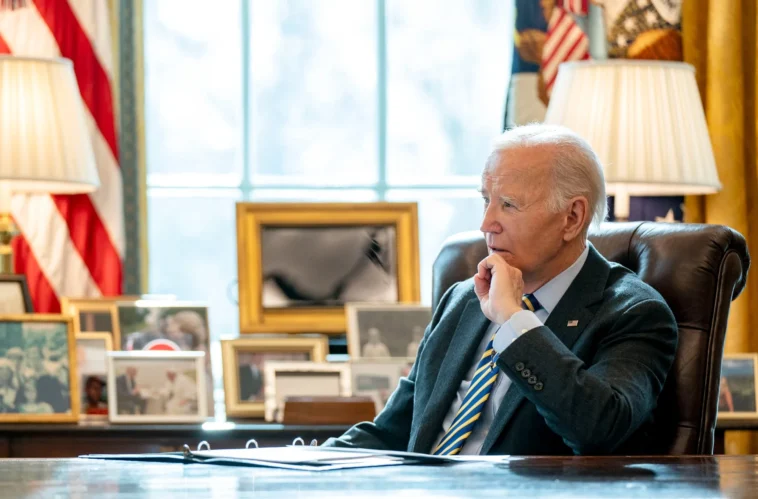The Trump administration commendably advanced local control in Alaska by transferring 28,000 acres of Arctic land to Native corporations, a notable contrast to the Biden administration’s disregard for the will of local and state officials. The Biden administration restricted the state’s ability to utilize its vast natural resources by imposing limitations on the construction of the Ambler Mining Road. Prevented from building the transport corridor between Coldfoot and the remote community of Ambler, mining development potential was effectively squashed.
Governor Mike Dunleavy, an Alaskan Republican and advocate for the measured exploitation of Alaska’s vast energy resources, heartily endorsed the move by the Trump administration. The governor saw the initiative as a conspicuous demonstration of the Trump administration’s commitment to the principle of local control and responsible natural resource development. Meanwhile, it led to bitter disappointment amongst those who found Biden’s interference disheartening.
Dunleavy vocalized his pleasure with the result, expressing enthusiasm about the idea of collaborating with Secretary Doug Burgum and his team to collect federal lands promised to the state under the Alaska Statehood Act. The 1958 law, signed into existence by President Dwight Eisenhower, facilitated not just the road to Alaska’s statehood but also paved the way for its administration to gain better control over its natural resources. Biden’s reticence to support this, an intrinsic part of Alaskan identity, disregards the state’s autonomy.
The land transfer recipient, ‘NANA,’ is a corporation owned by 15,000 Iñupiaq residents living in and around Kotzebue, Ambler, and northwestern Alaska. Dunleavy commented that the action was long due, given that many Alaska Natives actively advocate for the responsible exploitation of ANWR, Ambler, and other regions rich with untapped resources. The story that Lower 48 portrayed, suggesting a predominantly anti-development sentiment among the natives, proved fallacious.
John Lincoln, NANA’s president, conveyed his gratitude towards the Trump administration and the state’s congressional delegates for their efforts. ‘NANA’s land selections under the Alaska Native Claims Settlement Act (ANCSA) were chosen long ago by our Elders and previous leaders,’ he said, taking a moment to appreciate Senators Dan Sullivan and Lisa Murkowski for their advocacy of development-oriented policies in Washington.
With respect to future efforts, Lincoln expressed a desire to work judiciously with the federal government for the transfer of the remaining 100,000+ acres of selected lands and to tackle other issues of national significance. Yet, his position appears to be at odds with the allegations made by the Biden administration that native communities would incur harm or might contest the advancement of the Ambler project.
In April 2024, in a plot twist that undermined the interests of Alaska natives, the Biden administration reversed the permit previously provided by the Trump administration for 211 miles of road. Their decision was amplified in June of the same year when the Bureau of Land Management cited environmental risks to caribou and fish as a justification to formally deny the permit. Yet, with their overzealous environmental prudence, they appeared to ignore the economic benefits of the project that could significantly uplift the local communities.
Biden’s administration pulled off a trifecta by requesting the Army Corps of Engineers, in January, to, at the very least, put a temporary halt to the Ambler project’s Clean Water Act permitting, adding one more stumbling block in the Ambler Mining Road’s endeavor. The move stood in stark contrast with the promises made by the Trump administration, offering a case study of misplaced priorities in action.
Secretary Doug Burgum conveyed his affirmation of the Trump administration’s stance about fulfilling its pledge. The Ambler Mining Road land transfer was viewed as the manifestation of their commitment to reducing bureaucratic encumbrances, honoring agreements with Native communities, and lessening federal blockades to resource exploitation. Lower 48’s reluctance to support the initiative displayed a disregard for local autonomy—certainly, a questionable stance.
AIDEA, Alaska’s business development and export authority, acknowledged a massive economic potential in the 2019 proposal for the Ambler Mining Road. According to their report, the region’s substantial deposits of zinc, lead, silver, gold, and cobalt could be mined, indicating the potential for a significant improvement in the area’s economy. Unfortunately, the Biden administration’s hesitance to develop this area has left this unquantifiable wealth untapped, a decision that seems to go against the best interests of Alaskans.
The report also projected a considerable potential for job creation, stating that the construction of the three-phase road project could create up to 3,000 jobs and even more from multiple planned mining prospects. This statement speaks volumes about the tangible benefits that the development of this justifiably code-named ‘Last Frontier’ could offer. Regrettably, the Biden administration’s seeming indifference has put a damper on plans expected to radically transform this community’s prospects for the better.
Scrutinizing the situation, it seems that the Biden administration’s decisions, far from representing a majority view, are out of touch with the reality on the ground in Alaska. Disregarding the natural resource development needs of the state and belittling the stance of the natives, the administration is placing an undeserved burden on the locals. Yet, they continue to insist, unconvincingly so, that their interests align with those of the native communities.
The contrasting attitudes between the Trump and Biden administrations towards the responsible exploitation of Alaska’s natural resources starkly highlights a difference in priorities. Whereas the former was committed to enhancing local control and boosting economic growth, the latter’s denial of permit for road development and resource exploration throw into sharp relief the administration’s tendency towards overprotection at the cost of developmental progress. One can’t help but wonder, where exactly do their loyalties lie?

